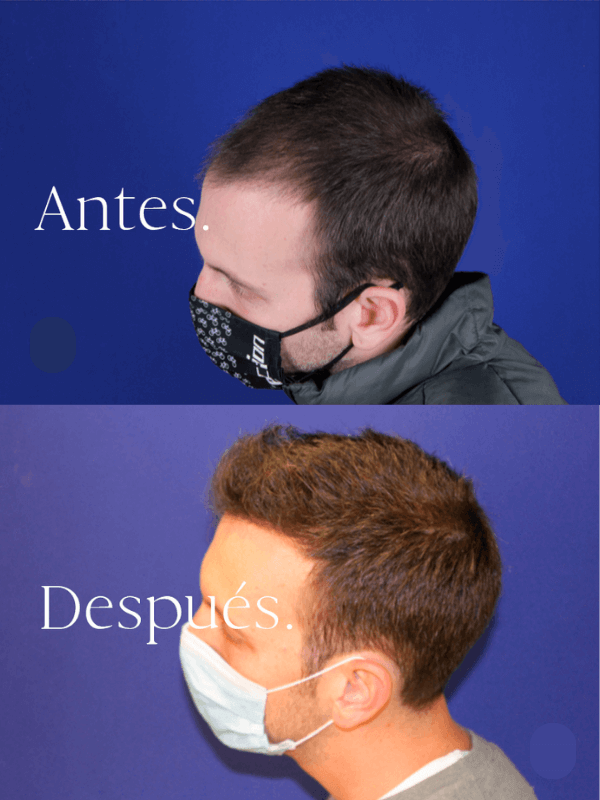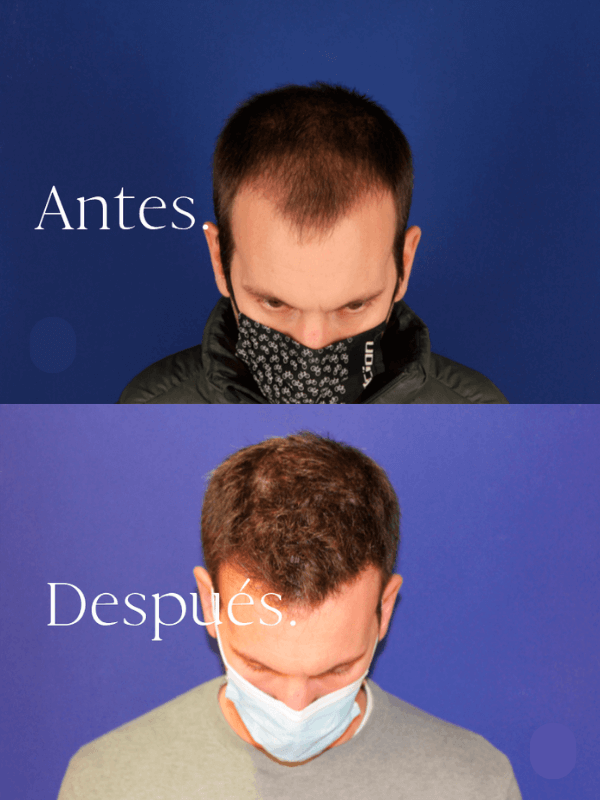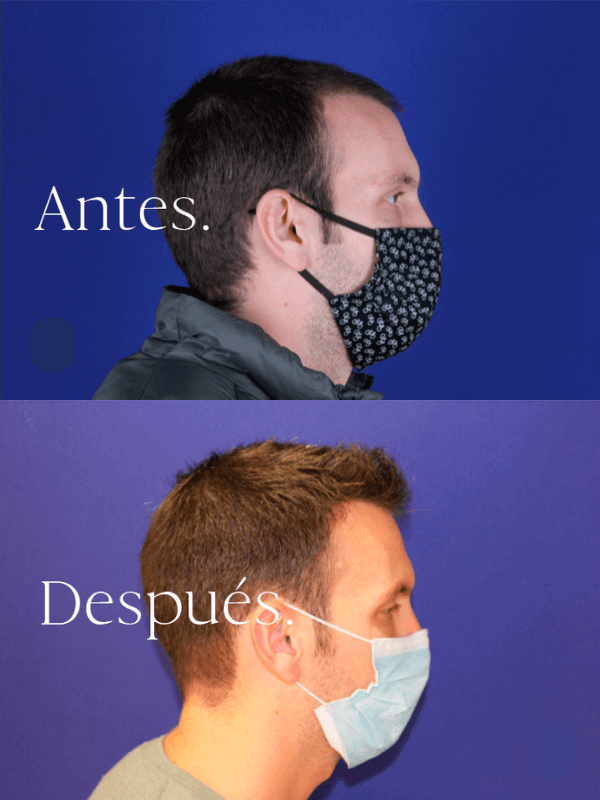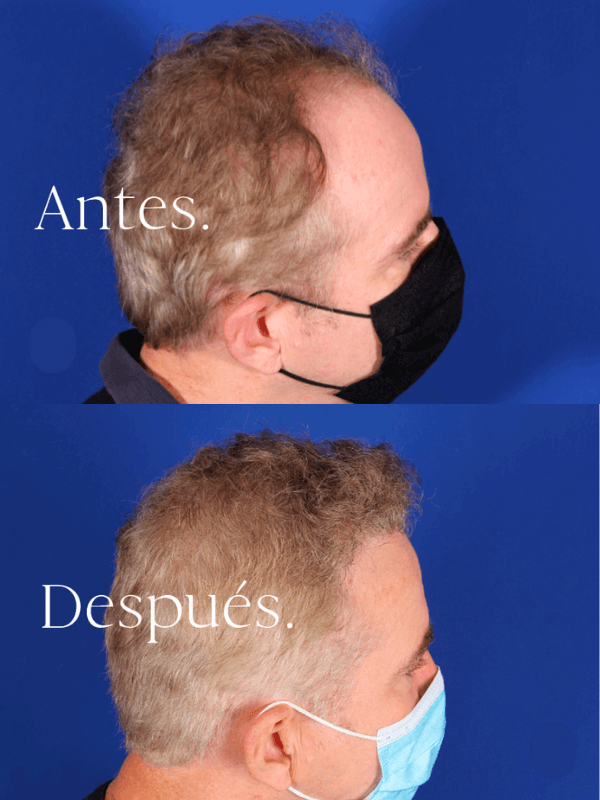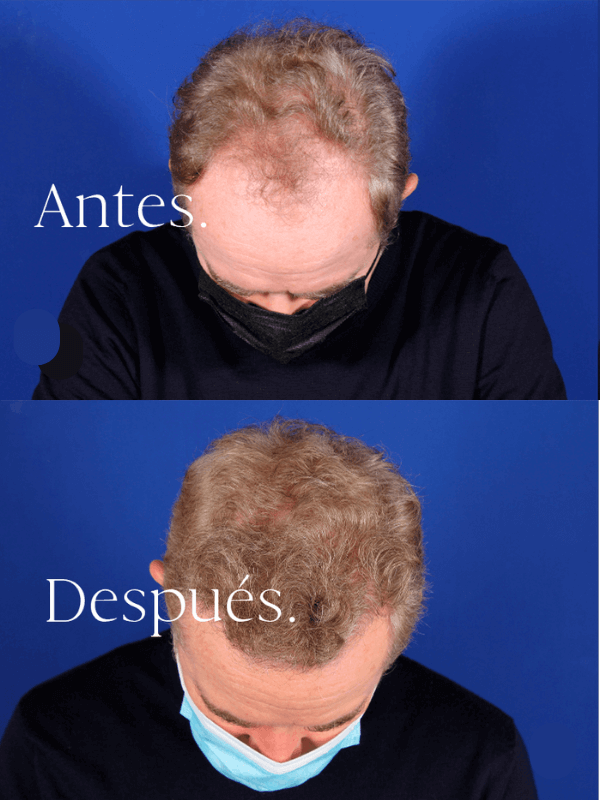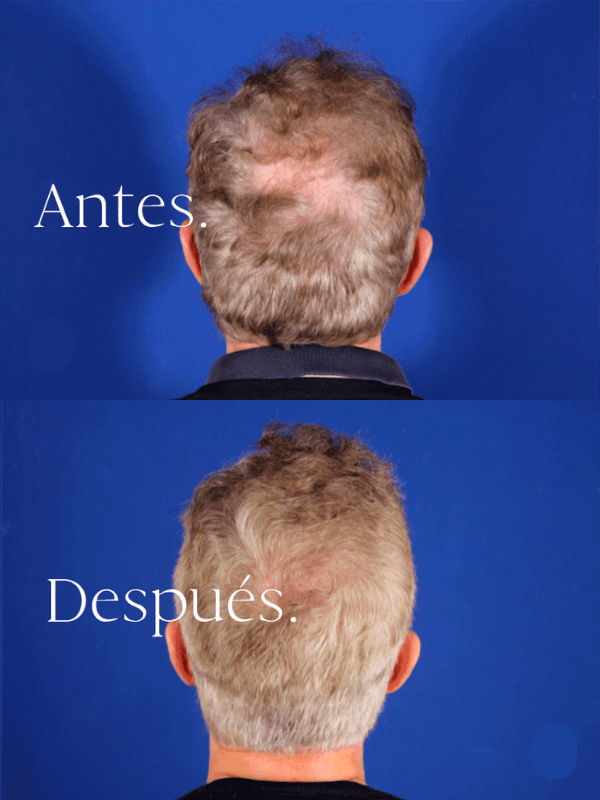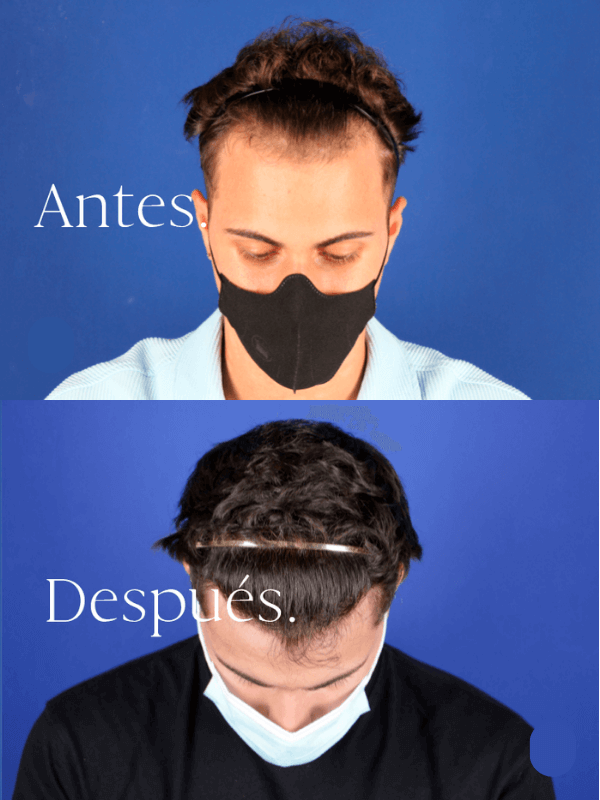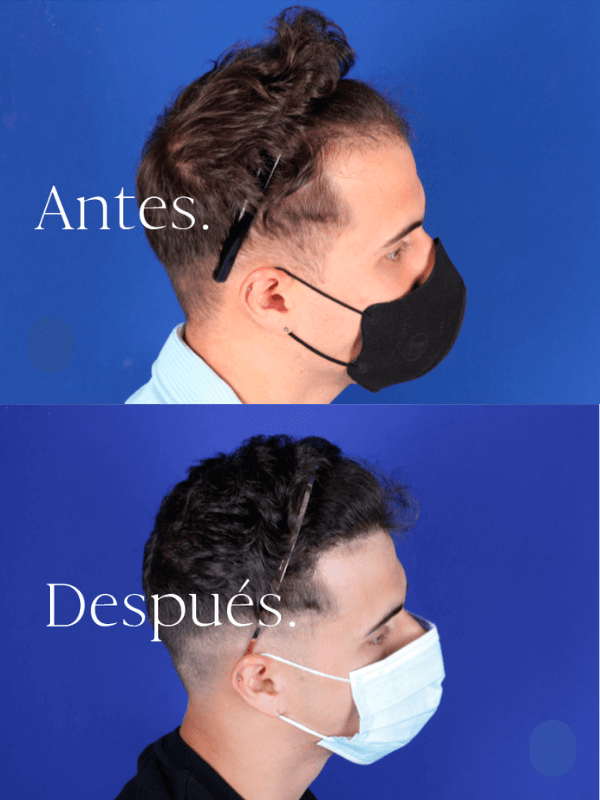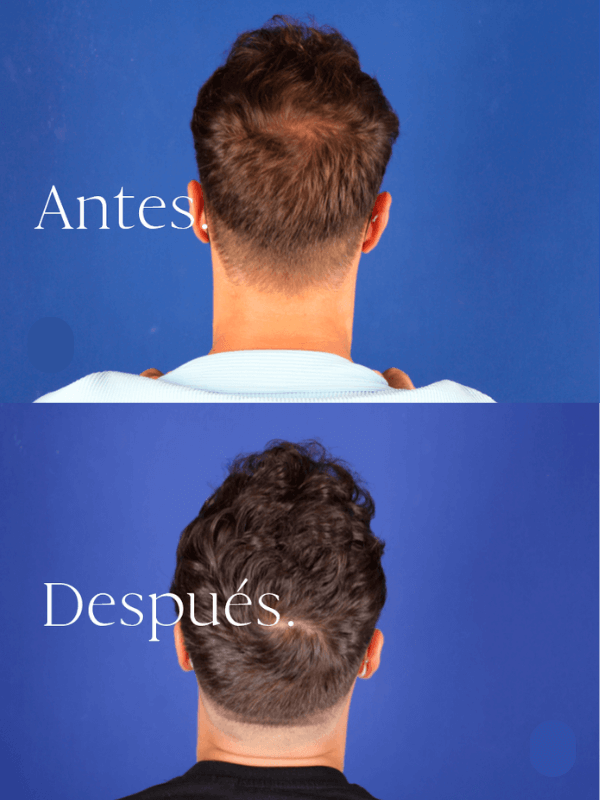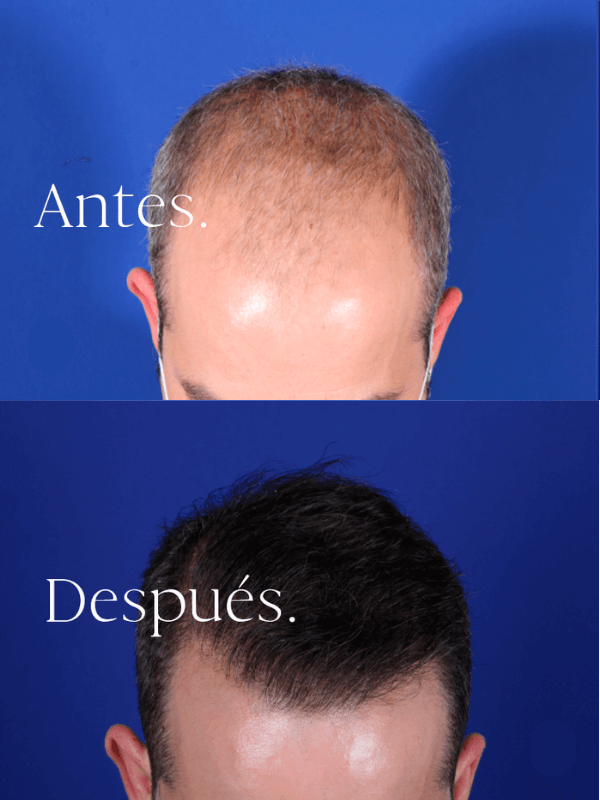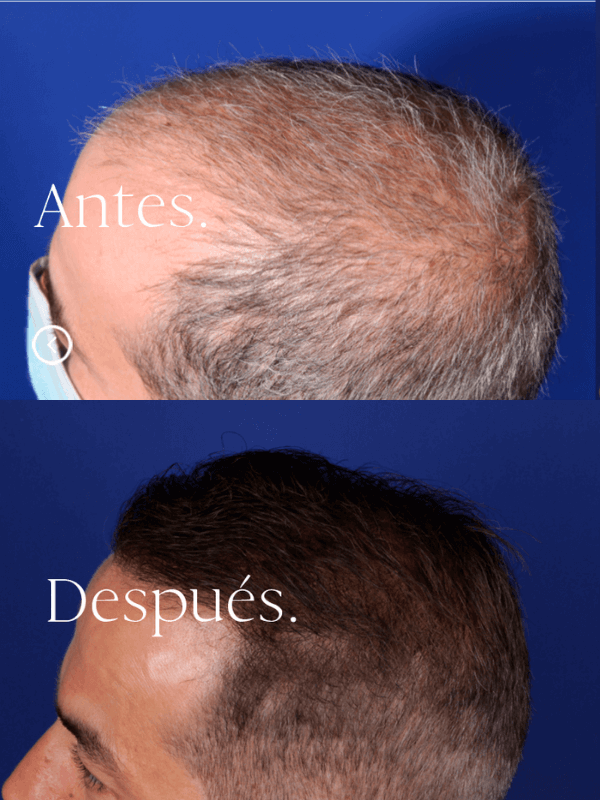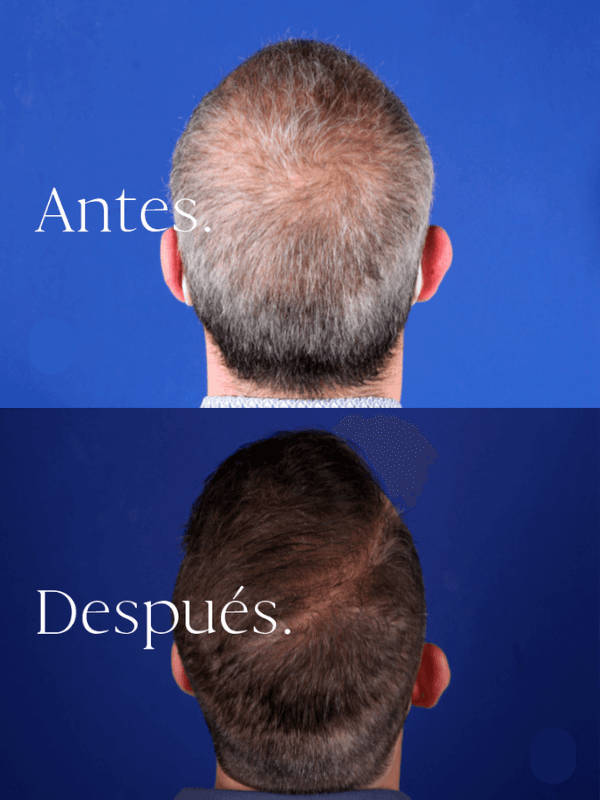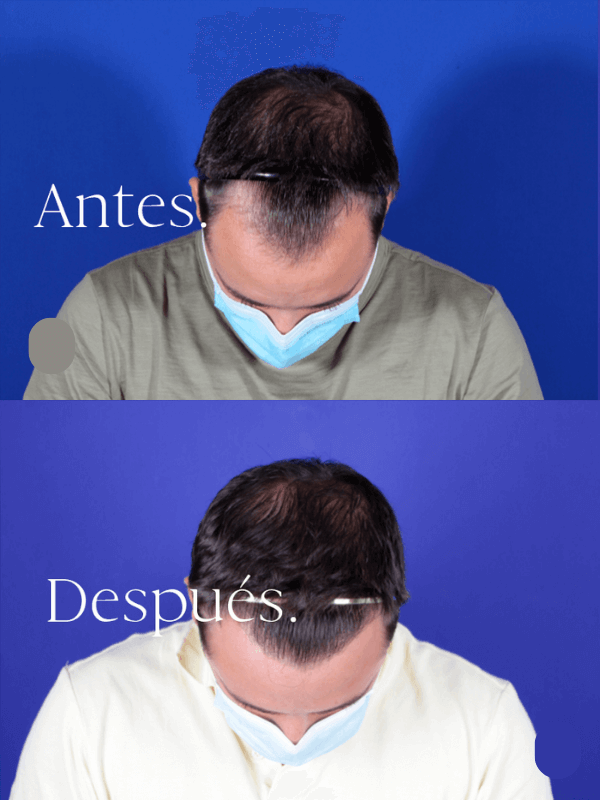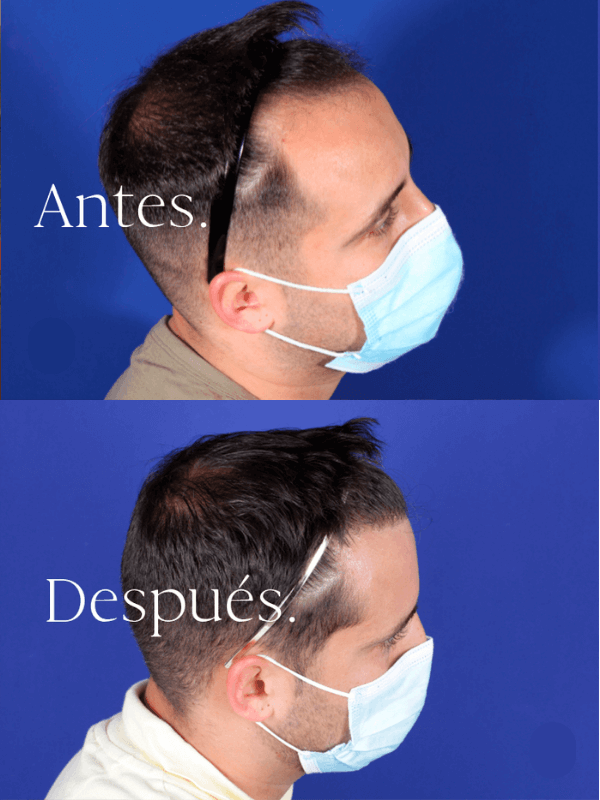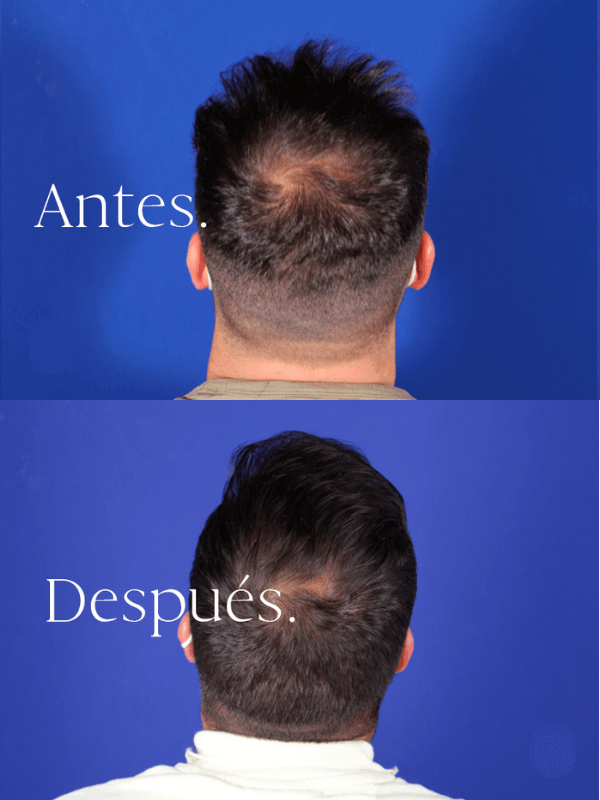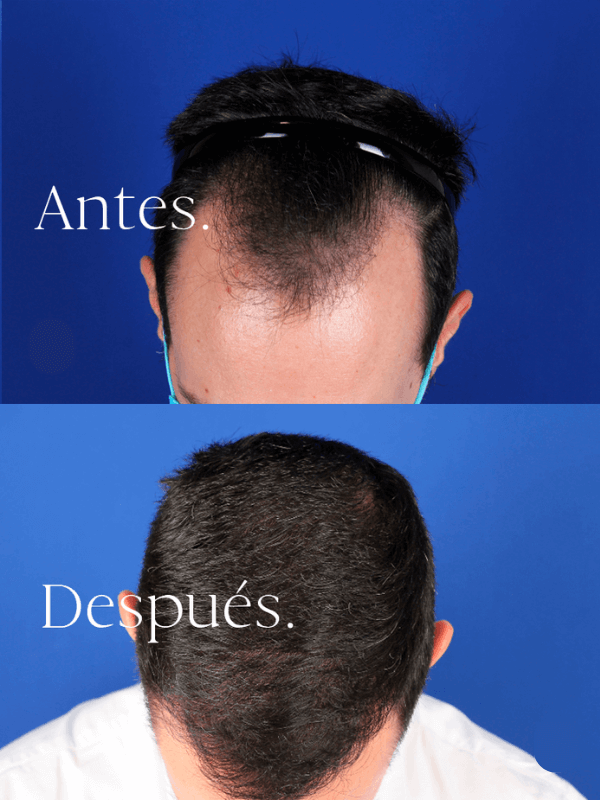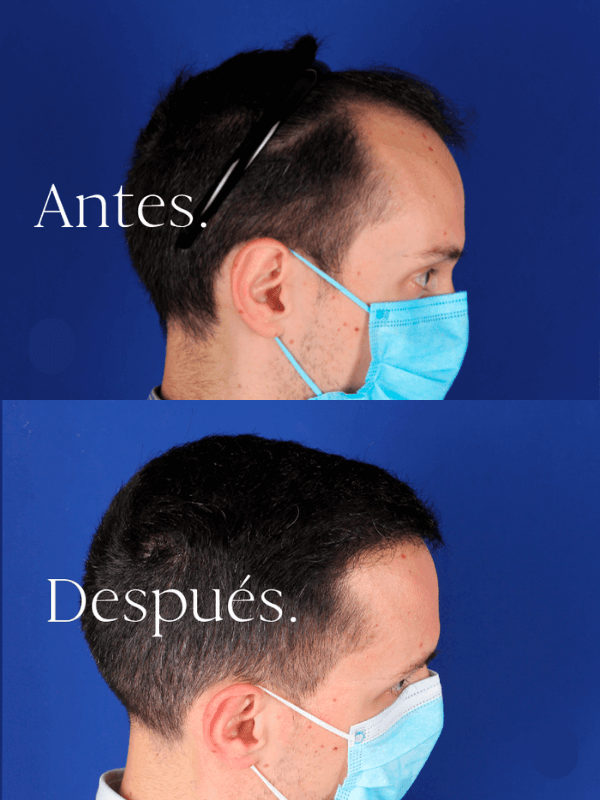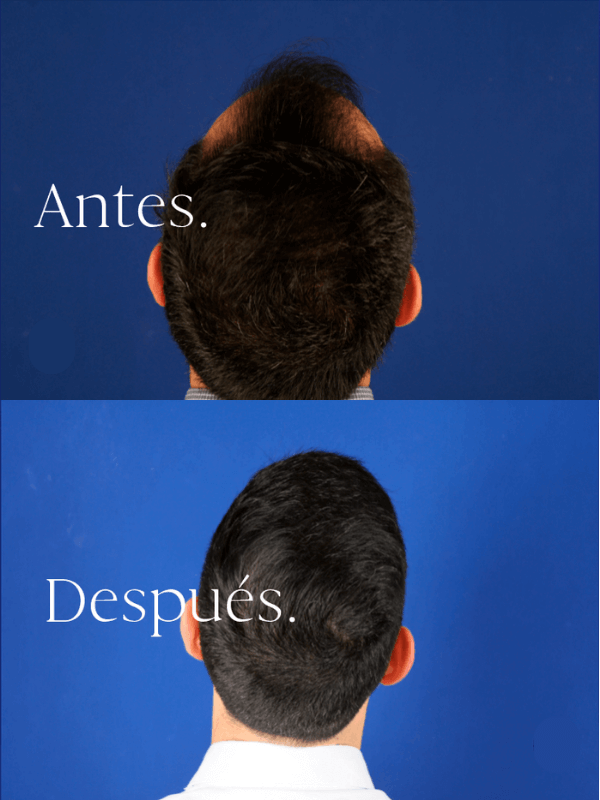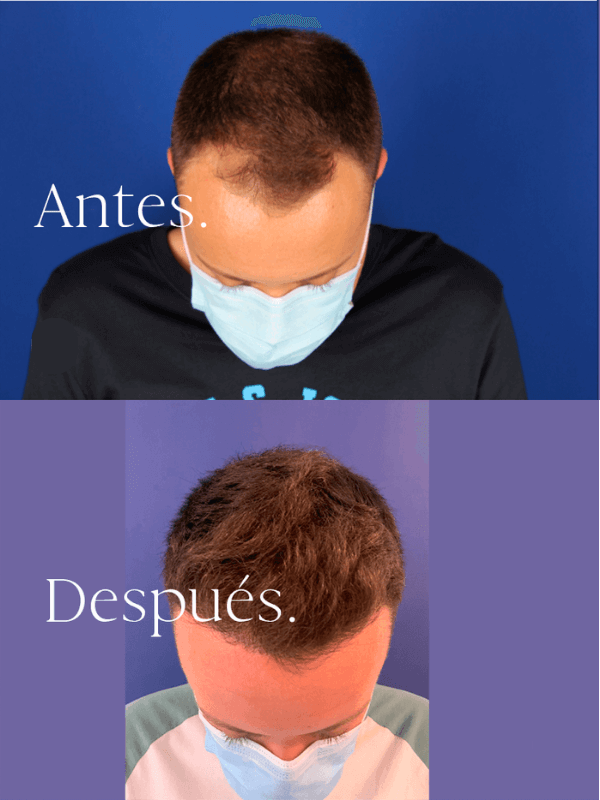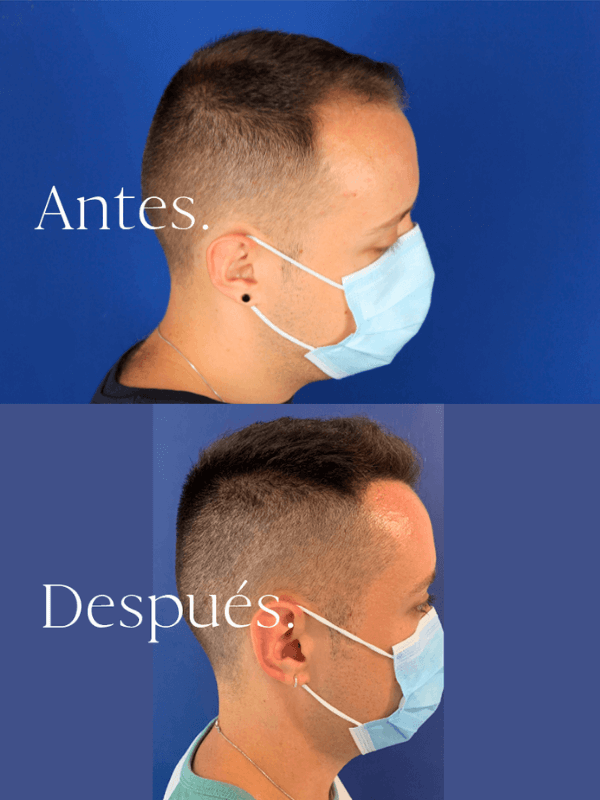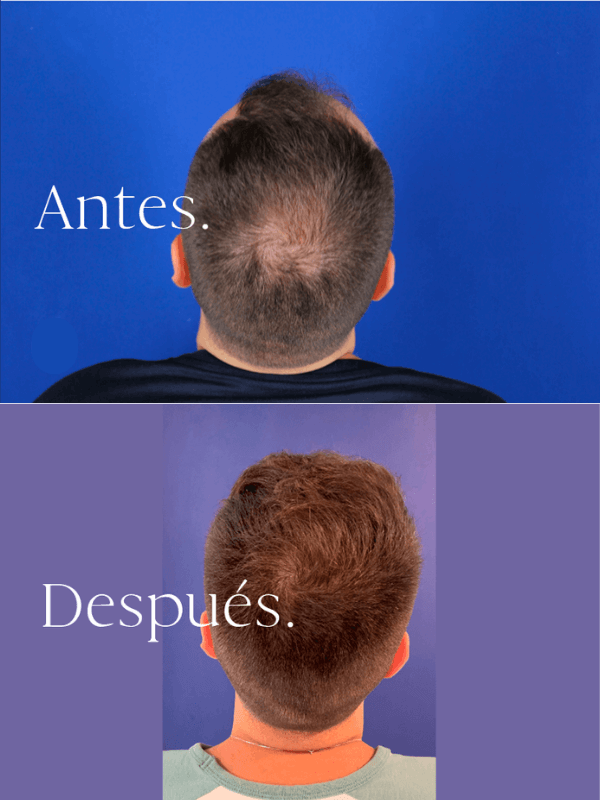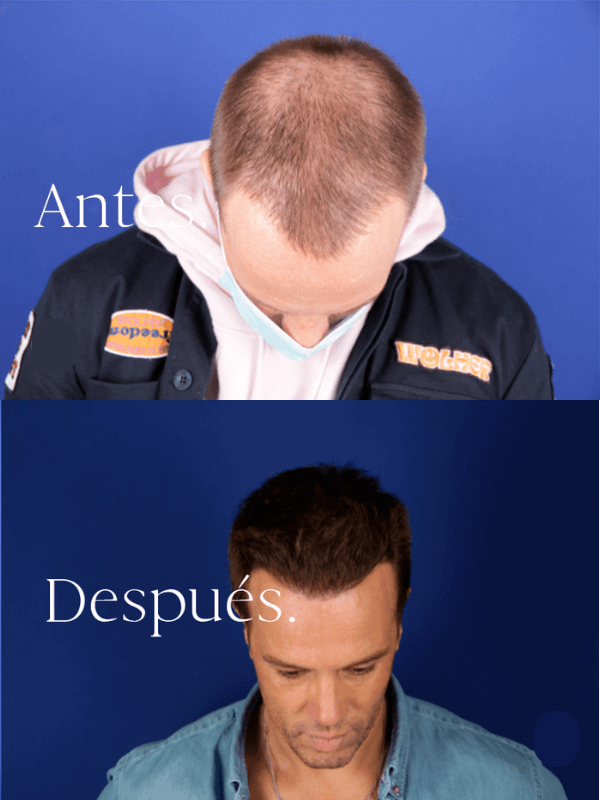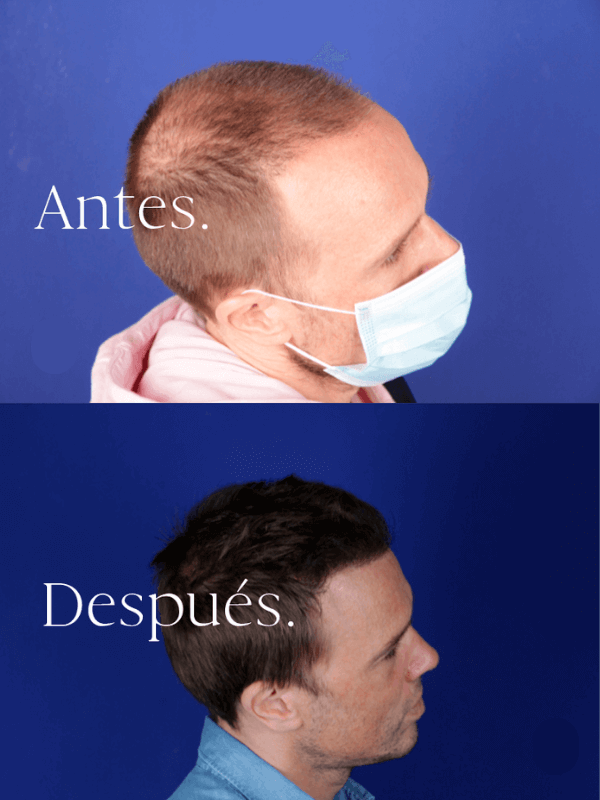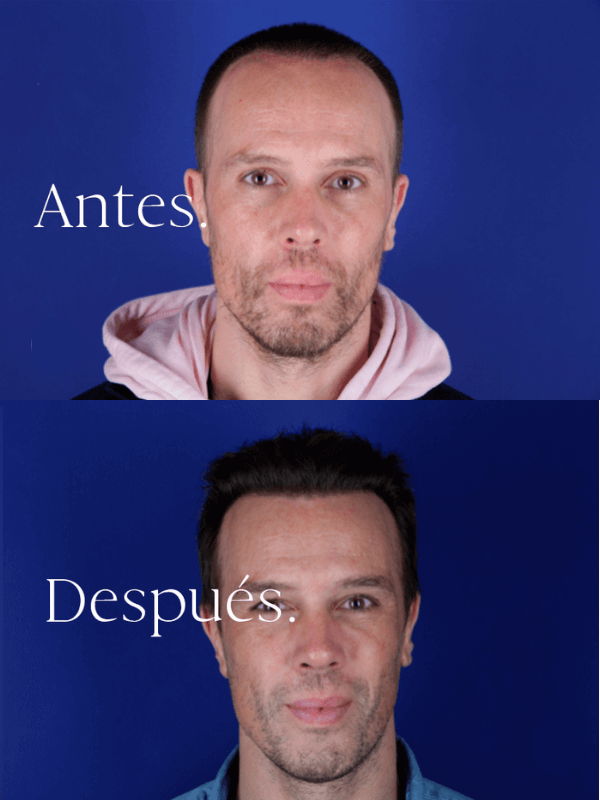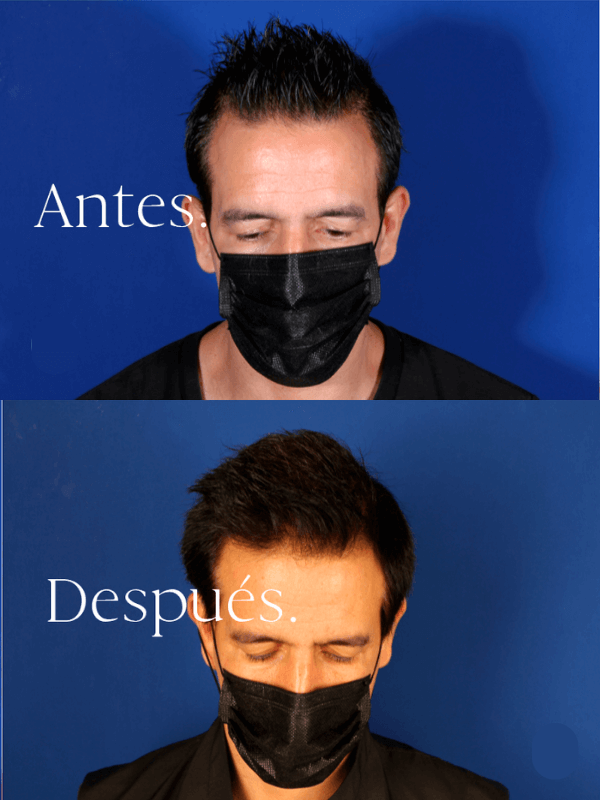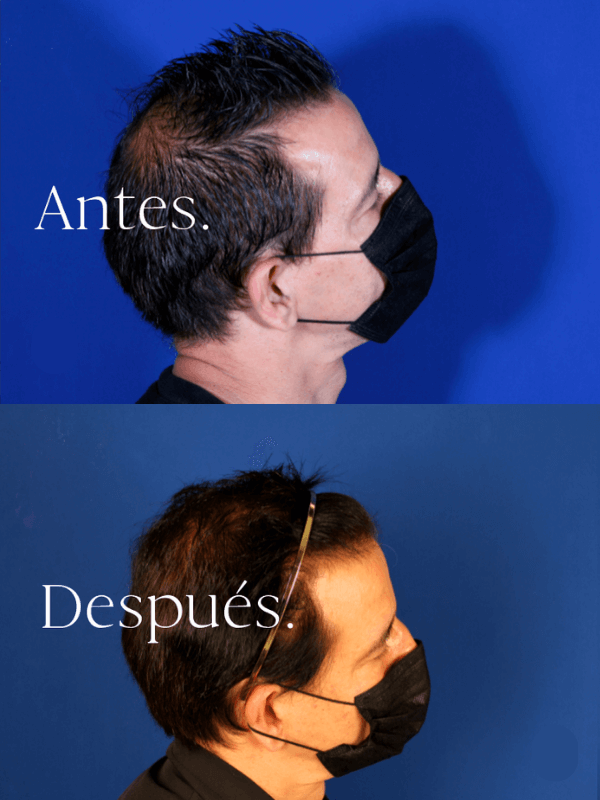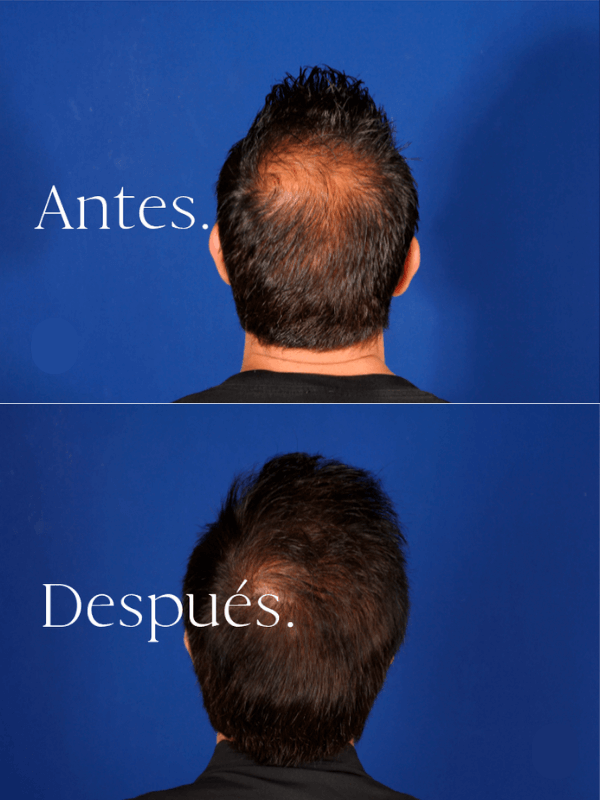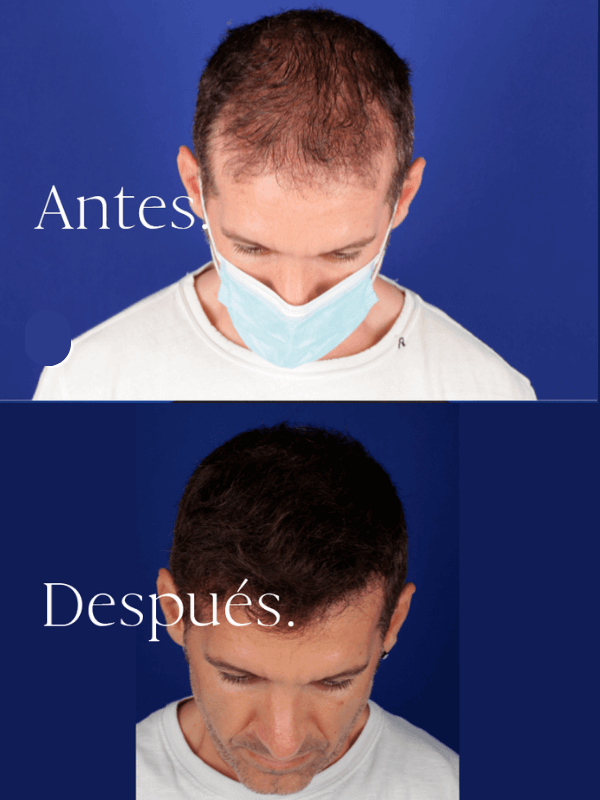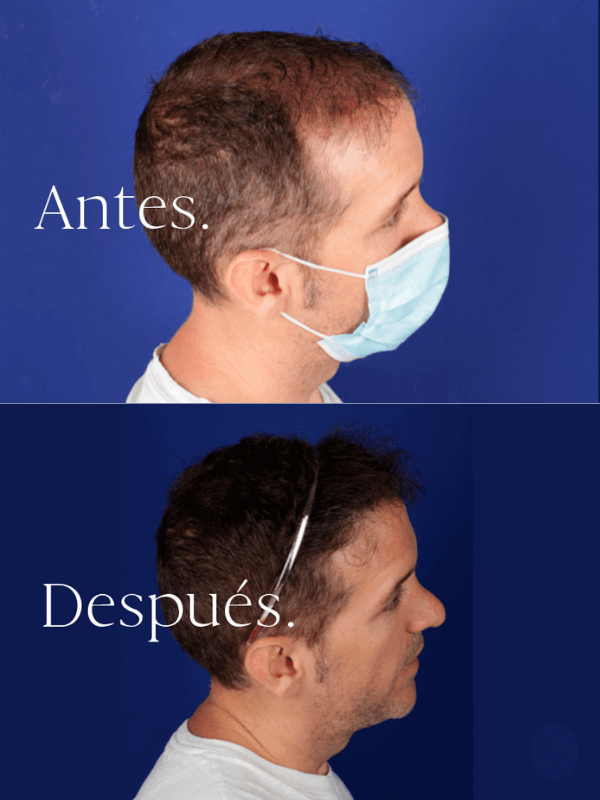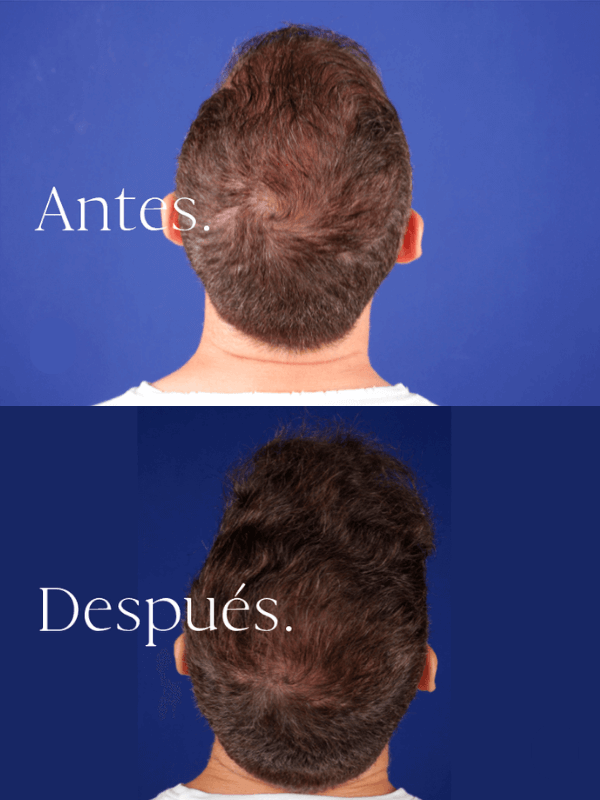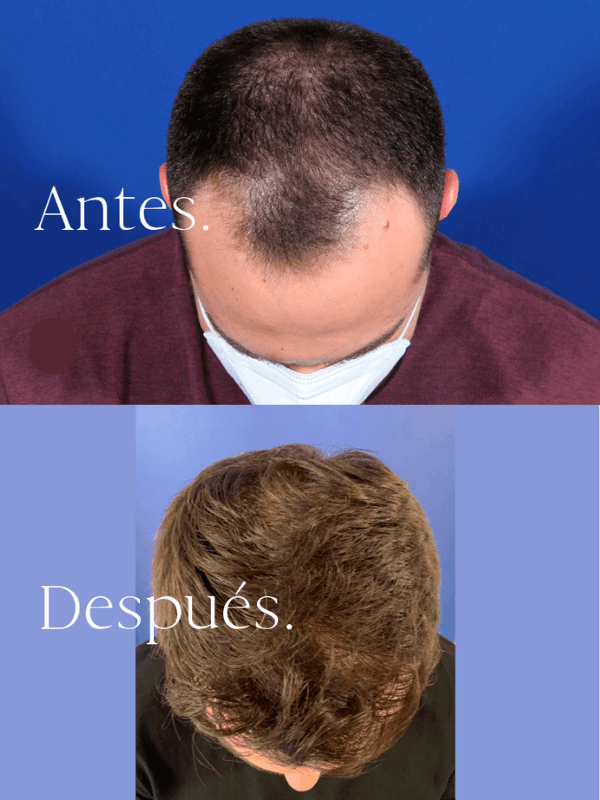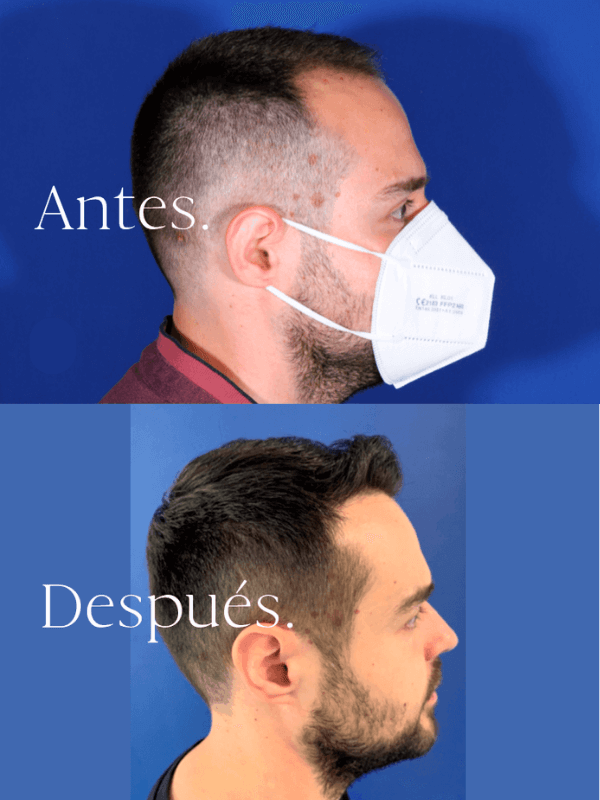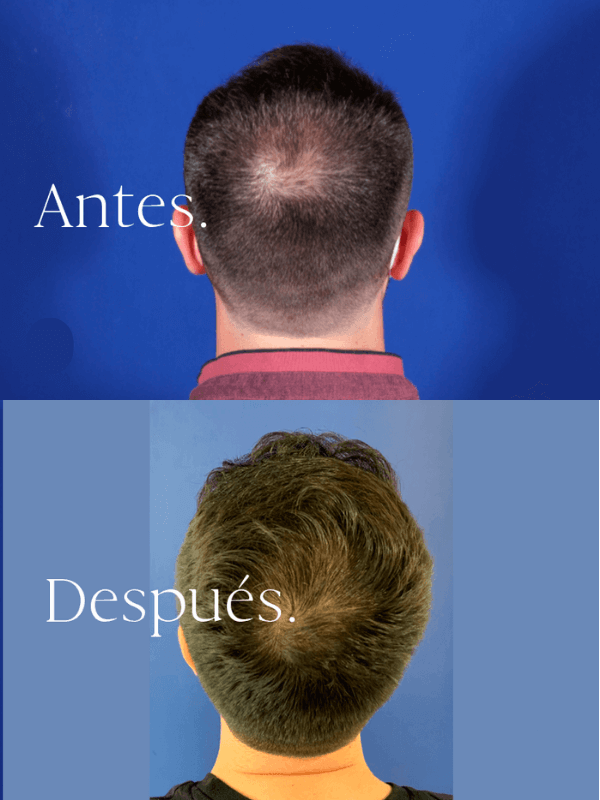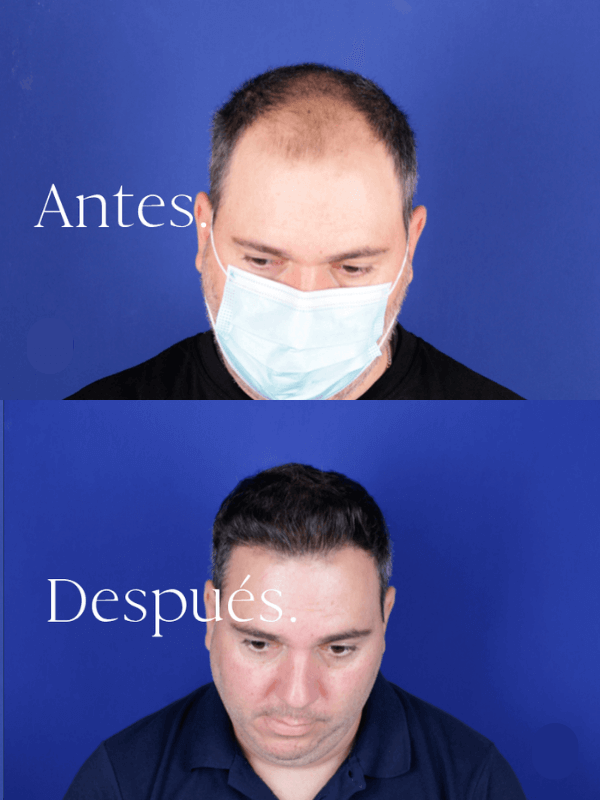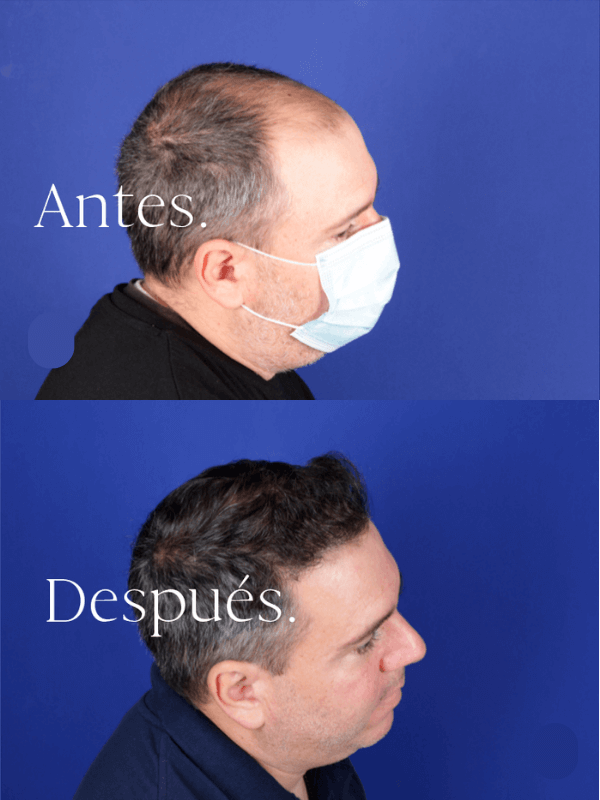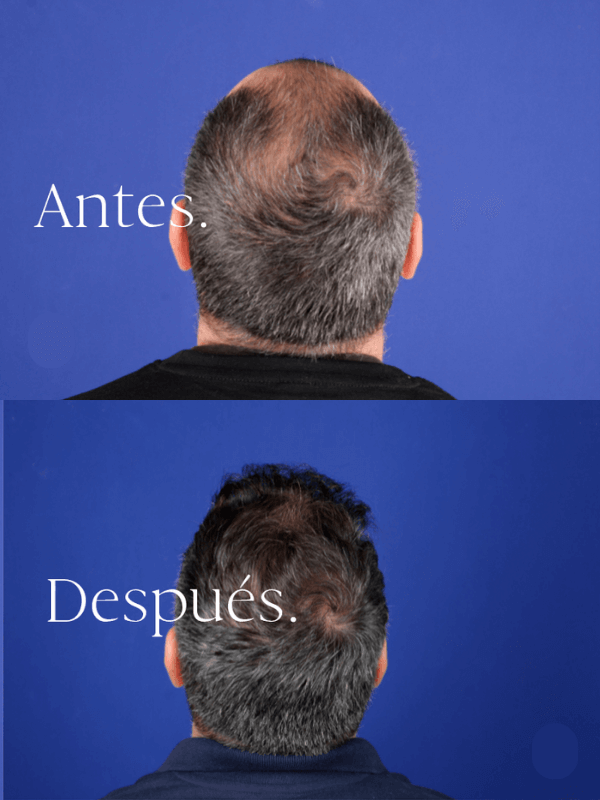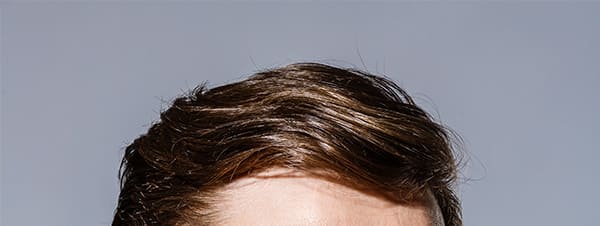
Causes of hair loss
Hair loss can have multiple causes.
It is very important to determine what is causing this loss. How do we do that? Performing a personalised diagnosis of each patient's hair loss.
Hair loss is caused by various factors, including:
1. Androgenic alopecia, a hereditary genetic predisposition
2. Hormonal changes
3. Stress
4. Burns
5. Infectious diseases
6. Chemotherapy
7. Autoimmune factors that cause alopecia areata
8. Postpartum
9. Medicines
One of the most common causes is androgenic alopecia in both men and women.
Book an appointment
CLÍNICA PLANAS' DATA PROTECTION INFORMATION CLICK HERE
Purposes: To respond to your requests and to send you commercial information about our products and services, including via electronic means. Rights: At any time, you can withdraw your consent, access, rectify, delete your data and exercise other rights at doctor@clinicaplanas.com. Additional Information: Privacy Policy.
Treatment of androgenic alopecia
The doctor will determine the corresponding treatment depending on the degree of alopecia, age, and gender.
Oral treatment or biostimulation and cell regeneration will be recommended for patients with grade I or II alopecia. These alternatives are very effective for treating native hair, i.e. the hair that the patient still has.
In situations where the doctor finds that the hair follicles in the patient's alopecic areas are critically affected, and conventional treatment will not be helpful, capillary micrografting would then be the preferred option.
At Clínica Planas, our micrografts leverage the FUE ZAFIRO technique, whereby hair is extracted one by one from the donor area—usually the sides and back—because this is where hair that does not have a genetic tendency to fall out is found.
The surgery must be performed as swiftly as possible because hair implanted immediately after removal has a better survival rate.
This procedure is performed:
1. On an outpatient basis
2. On both donor and implanted areas. We work with a pressurised anaesthetic device, without needles.
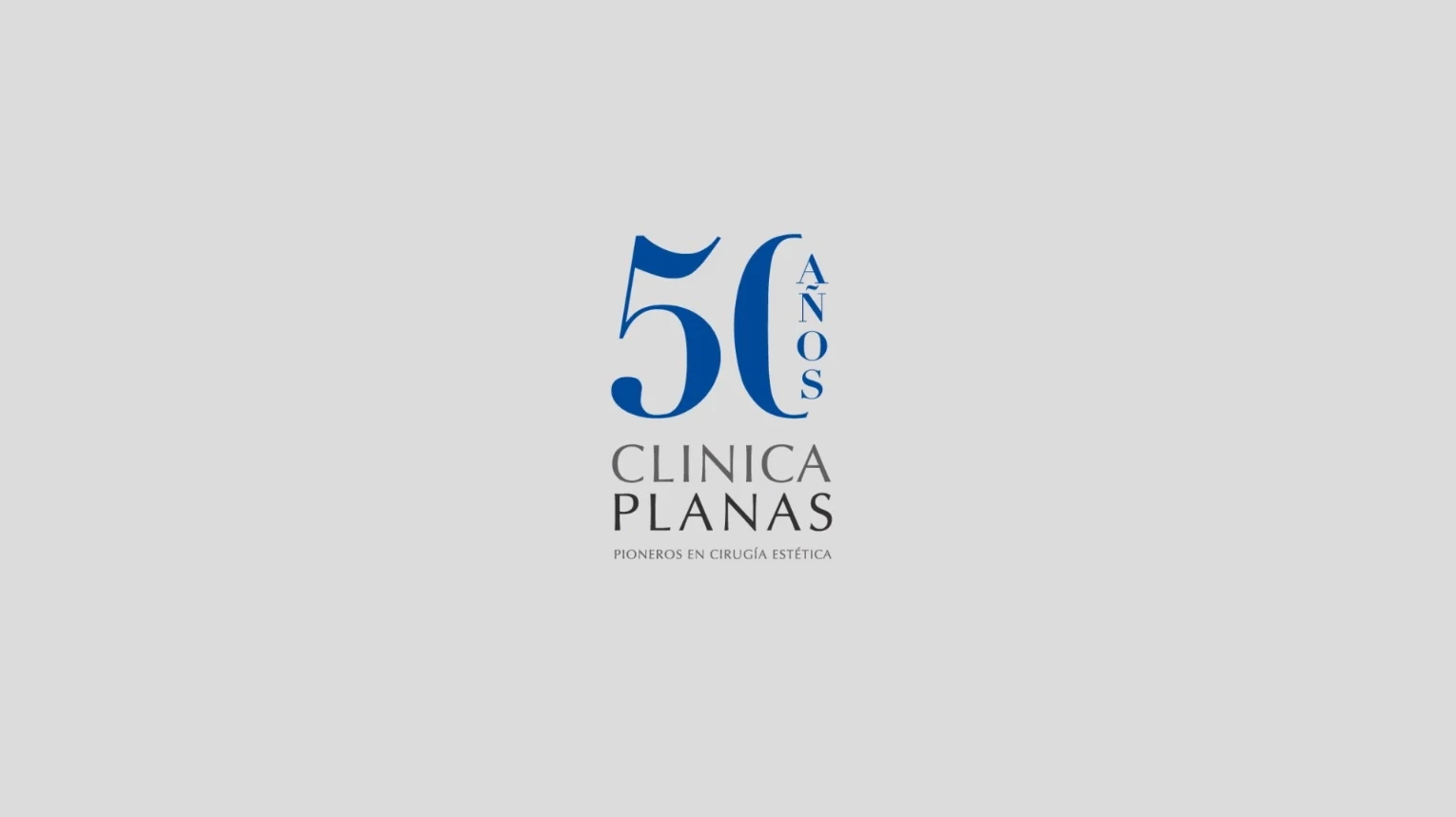
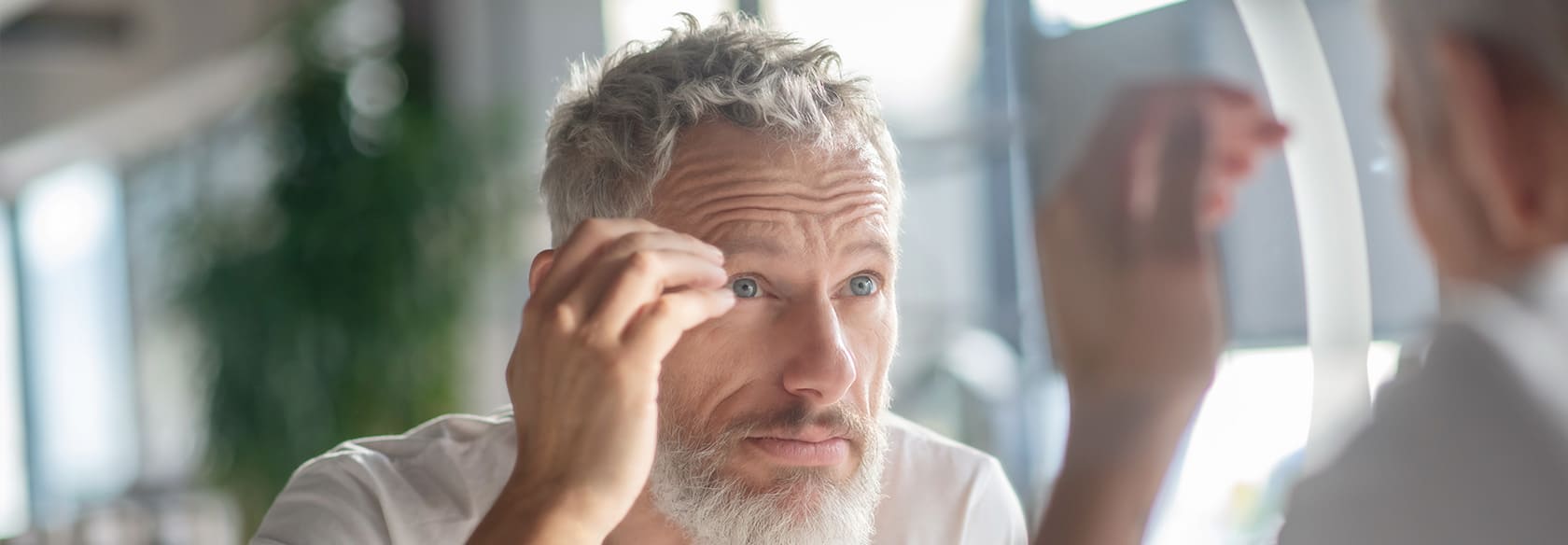
What does capillary micrografting entail?
Procedural phases
Hair grafting lets you regain hair coverage. How do we do it? Taking the patient's own hair follicles and transplanting them to areas affected by hair loss.
The FUE Zafiro technique involves extracting hairs one by one and can be summarised in three phases:
Incision
First, we use Zafiro to make the incisions
Follicle extraction
The second phase consists of extracting follicles from the donor area (the sides of the head and the front, where there is less genetic predisposition to hair loss) to cover the area where hair has been lost. These donor areas will remain unaffected.
At Clínica Planas, we perform the procedure in this order to reduce the time the follicle is outside the body to an absolute minimum.
To ensure the vitality of the hair follicle, we use organ preservation solutions while the follicle is outside the body.
Implementation
The final phase is the implantation of the follicles into the previously made incisions. Follicle distribution will follow specific aesthetic patterns depending on age and the future progression of alopecia.
Generally, the first lines are established with one and two hair follicles, which provide a natural aesthetic appearance, while the rest of the area is filled with grafts of 2, 3, 4, and even 5 hairs, which are responsible for achieving the desired density.
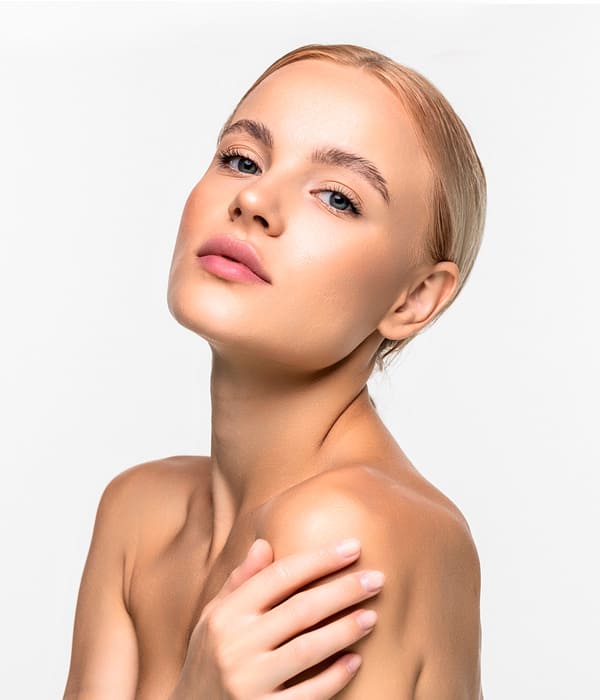
Benefits of capillary micrografting
Capillary micrografting brings multiple benefits:
1. This is a permanent technique that provides a significant aesthetic improvement and completely natural, visible results in a short period of time.
2. As the patient is the hair donor, there is no risk of rejection.
3. No general anaesthesia is needed.
4. We use pressurised local anaesthesia,
thus obviating the need for needles.
Hair micro-grafts Before and after
These are some before-and-after cases of hair micrografts. In these images, we can see different examples of the results that this treatment can offer. However, each patient is unique, which is why we offer a free initial consultation.
Pre-operative
The preoperative guidelines are very simple and applicable to any type of procedure. A prior visit with the hair specialist is required, who will carry out the necessary tests to check your health.
First micrografting visit
During the initial assessment visit for capillary micrograft surgery, the specialist will conduct the necessary tests, such as trichoscopy.
Trichoscopy is useful for checking:
1. The health of the scalp.
2. The degree of baldness.
3. The quality and quantity of the donor area.
4. The progression of alopecia.
Based on the results, each case will be assessed and deadlines, characteristics and indications for surgery will be established before a decision is made. Optimal results are best achieved by consulting surgeons whose exclusive expertise lies in such interventions.
F.A.Q.
-
How should we treat common alopecia?
In the early stages of hair loss, we can use available medications: topically, minoxidil; orally, finasteride tablets. Their use delays hair loss, though it rarely stops it. In the most advanced stages, hair transplant surgery is the only definitive medical solution.
-
How has hair transplantation evolved over time?
Since 1990, it has undergone constant evolution in terms of the instruments used, aesthetic results, and patient comfort. In the early days, 1,000 to 1,500 hairs were transplanted per session. Currently, between 3,000 and 3,500 hairs are transplanted, and even in large donors with severe baldness, up to 4,000 hairs can be transplanted in a single session. Exceeding this figure could reduce the survival rate of grafts, which currently exceeds 98% of grafts grown in each patient.
-
Who can benefit from this surgery?
Candidates for this type of surgery are people who experience permanent hair loss, mainly men with moderate to advanced alopecia. Micrografting is also used by some women with androgenetic hair loss, patients with scarred areas (burns), and patients who wish to repopulate their eyebrows, beard or pubic area. In short, this procedure is recommended for all patients who wish to recover some of their lost hair naturally and permanently.
-
When is the best time for surgery?
During your first visit, the surgeon will advise you and warn you about the future progression of your alopecia. This will enable them to plan a treatment plan based on your individual characteristics, such as the capacity of your donor area, the current degree of alopecia, future development, and desired expectations. With experience and detailed information, you and your specialist will decide on the ideal time for your first surgery.
-
What is the objective of the intervention?
To restore your hair naturally and permanently with minor outpatient surgery. The aesthetic results are completely natural and satisfactory.
-
Will there be any scarring?
There will be a very fine scar in the area where the hair is extracted, which is hidden by the surrounding hair.
-
How many sessions are necessary?
As this is an individualised treatment, sessions will vary depending on the type and degree of alopecia. Generally, a single session is enough for minor alopecia, while two to three sessions are needed for more extensive regions. In such cases, the patient makes the decision concerning the time between each session, though we do recommend spacing sessions out between four and six months.
-
Does it require any special care?
Once grown, the hair will behaves in the same way as the hair in its donor area, i.e. it develops in the same way as the hair on the back of the neck. The significant upside is that it does not affect the patient's life moving forward, which helps them move past their earlier aesthetic concerns.
-
How long do the results last?
Transplanted hair is permanent and lasts a lifetime. This statement is based on the results obtained since the first transplants were performed in 1959, as well as on our professional experience of more than fifteen years. It is an autograft that will retain all the characteristics of its area of origin.
-
Where should I go to get the best results?
As this is an individualised treatment, sessions will vary depending on the type and degree of alopecia. Generally, a single session is enough for minor alopecia, while two to three sessions are needed for more extensive regions. In such cases, the patient makes the decision concerning the time between each session, though we do recommend spacing sessions out between four and six months.
-
Will there be any scarring after hair surgery?
There will be no scars after surgery because the extraction is performed hair by hair using a punch, a device with a micromotor that extracts the follicles, leaving a millimetre-long scar that is imperceptible to the human eye.
-
How many micrograft sessions are necessary?
It depends on how advanced the patient’s alopecia is. Most patients normally need just a single micrograft appointment; however, a second session might be needed if the donor area has enough hair.
-
How long do the results of a hair transplant last?
Implanted hair lasts a lifetime; once in place, it will not fall out again. It is advisable to undergo oral treatment to maintain your natural hair, which also has a genetic predisposition to fall out, so that over time, it is not only the implanted hair that remains.
